Another System for Productivity
It‘s been at least two years since I last wrote about TODO lists and I‘ve tried several different options from going back to the Bullet Journal, trying OmniFocus again, to using Agenda for notes and todos. Through all this I still wasn’t feeling like I found a great system and easily could convince myself to ignore a todo or have to do weird things like moving tasks when I couldn’t get to them in a day. I think I’ve found a new system for the long term.
I wrote about Things last year and it‘s no surprise to me that I went back to it. I love OmniFocus too but it‘s largely overkill for what I need and required too much management. Things is simple and powerful enough to do almost everything I want and provides a cool visualization to show the progress of a project.
It‘s not Things 3 alone that is a part of this new system. I learned a new way to prioritize tasks for myself such that I can make good decisions about what I should be doing. It starts with a mindmap. Every week or just occasionally, I‘ll have a brain dump to get as many tasks down on paper. In my case I use Notability on my iPad Pro and write out a basic mind map of tasks.
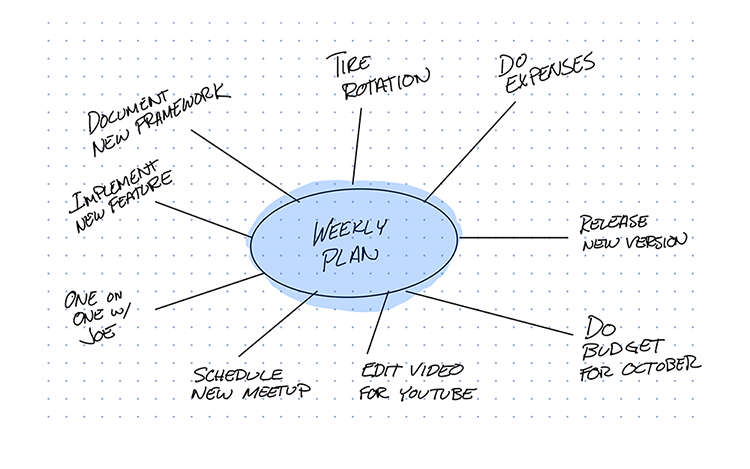
It actually really helps me to do it in this format because I enjoy the writing—and drawing. This format also really helps me expand tasks that are related and expand out the map to more tasks that I might have forgotten.
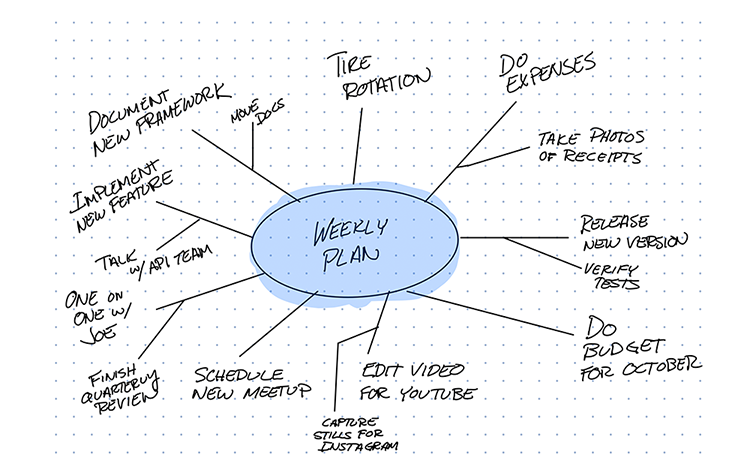
Now that I have all these things listed out the next step is to prioritize. I‘d known about the four quadrant method for years—I think it‘s called the Eisenhower method. Recently I learned about a 9-space grid. It’s effectively the same idea though. On one axis the urgency increases, and on the other axis value. For example the top-left quadrant contains items that are high value and very urgent. I still end up using the 4 quadrant method but I think seeing it in context of the 9 grid is really helpful.
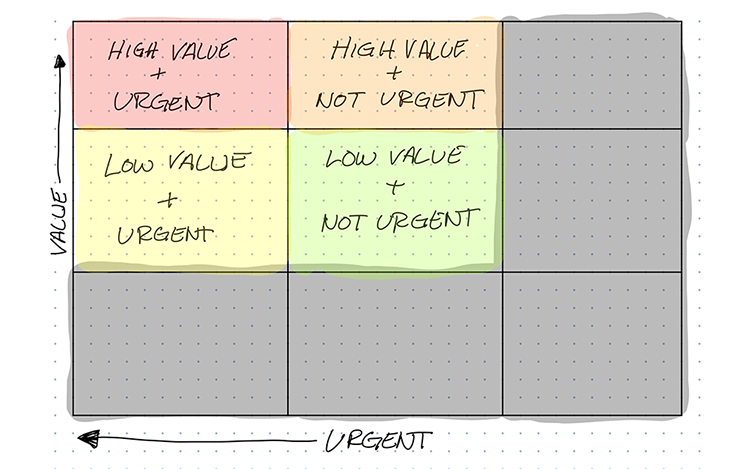
Next I‘ll do my best to prioritize everything on the mind map. This helps me think about relationships or dependencies between tasks and think about both how valuable/urgent they are. Sometimes it helps writing it into the 9-grid but I’ve found over time—and my use of the 4-grid instead—I can just as easily rate everything on a 1-4 scale.
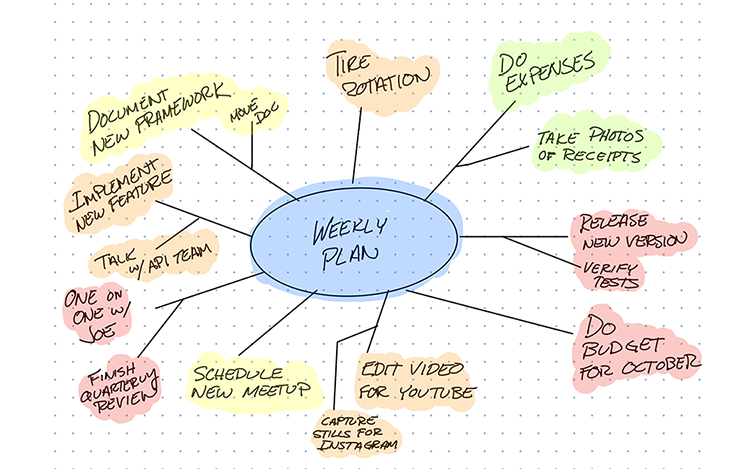
Here‘s where Things 3 comes into the picture. I follow some simple rules that helps this all stay together. I create “Areas” for each portion of my life. Most importantly I‘ll have one called “Self” and several for the other areas. Note these aren’t “Projects”. I define an Area as something that can contain Projects or individual tasks. As an example, the “Work” area may have a project like “Release v1.2” or individual task like “Set up meeting with Joe”. I don’t ever create projects like “Misc”, a project is defined as something that can be completed, all other tasks just live in the area itself.

Now how do I apply the prioritization? Tags. Things 3 has a nice tag system and you can add a tag with some hot keys like ctrl + 1. This is especially great since I prioritize these by 1-4. This means new tasks can be immediately prioritized when I create a task. This is one of the key things to me. Even though I love the above method for brain dumping, I get new tasks or ideas all throughout the day. This tag system means I can give an immediate prioritization and even a target day to work on it.
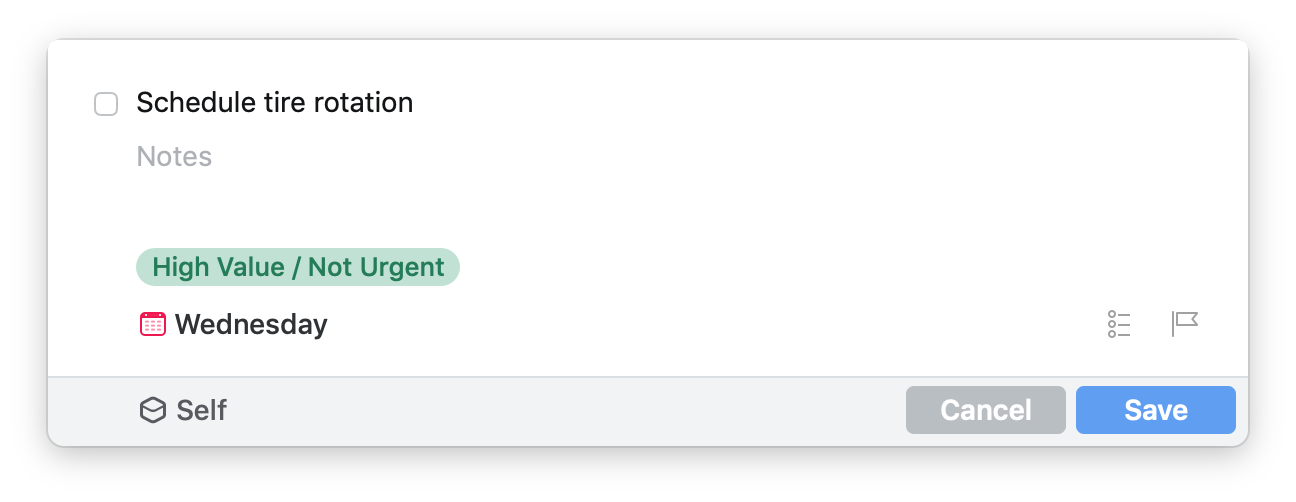
Finally this all comes back to the day to day. Every morning I look through each of my projects and determine if I can work on it today or not. Now I have a list of todos that need to happen today. This crosses across all areas of my life. It‘s the source of truth of what I need to do.

Things 3 also allows you to filter a view by tag. Since tags represent priority, I can choose to only see those urgent high value tasks when I have high energy, and choose less urgent tasks when I’m lower on energy.
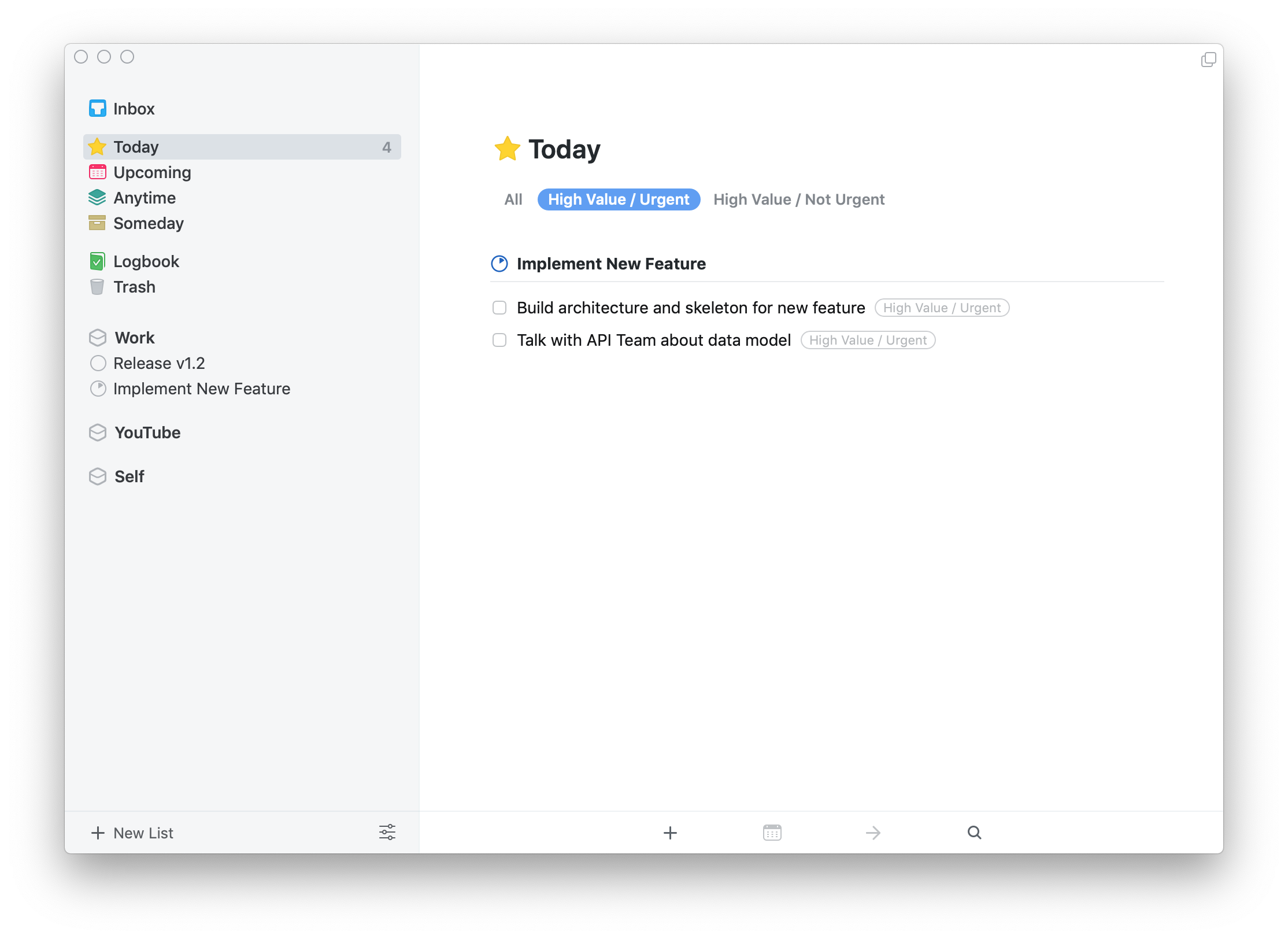
This all seems like a lot. It‘s not really. The brain dump only happens when there are a significant number of tasks. Otherwise, I just add things as they come up. This creates a system that is easy to manage and not overwhelming. This helps me keep up with tasks more. Also, individual projects get a nice little progress indicator which helps me see at a glance how they are doing. For me a system has to be extremely simple to reason about and easy to manage. Otherwise, I‘m incredibly capable of avoiding the work of managing my time and allow myself to focus on things that aren‘t as valuable. I‘ve been doing this now for a few weeks and it‘s going well. I can‘t say it‘s the final system I‘ll use but I think it‘s the most likely going to stick around for some time.